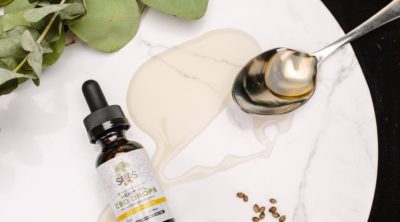
Boils are one of the most common forms of bacterial infections. There are certain ointments that help clear the infection and speed up the healing process. This article provides information regarding the same.
A boil, or a sore, is a skin infection which occurs due to a bacterium called Staphylococcus aureus. Although, it can occur anywhere on the skin, the hair follicles are the most common site for its eruption. The boils are basically bumps that are full of bacteria, protein, leukocytes (white-blood cells), and pus. Although they are potentially harmless, they are extremely painful and cause a lot of discomfort. ‘Incision and drain’ is the most effective remedy for curing these skin sores. However, if proper hygiene measures are not implemented, they may spread to surrounding skin due to the contagious nature of the pus. To avoid this problem, one can safely use antibiotic ointments to treat the boils.
Ingredients
The antibiotic and healing properties of an ointment are due to the natural or chemical ingredients present in it. Sulfur is often used in boil ointments to relieve the symptoms of itching, burning, and dryness. Extract of a flower named Calendula officinalis is used to promote healing of the skin. Echinacea Angustifolia, is yet another ingredient which is used in these medications. This ingredient is obtained from purple coneflower, and it particularly helps control the spread of the infection, and thereby prevents septic condition. In addition to these ingredients, other ingredients may also be used to eradicate the symptoms of the infection.
Homemade Ointment
When the ointments for curing the sores were not available commercially, people used various natural ingredients to treat the infection.
- Margosa or neem is by far the most effective natural remedy that has been used so far. It has terrific antibiotic properties. To prepare a neem ointment at home, crush 15 to 20 neem leaves and put the pulp in half a liter water. Boil the mixture until the volume of the liquid reduces to half its original. Allow the mixture to cool, and then apply on the affected area and surrounding skin.
- You can also make a thick paste of cumin seeds and hot water, and apply it generously all over the affected skin.
- Milk cream is also considered as a good home remedy. It works particularly well when applied with bread. Make a poultice of milk cream and bread, and apply it to the affected skin.
- A paste of onion and garlic is also considered as an effective remedy to cure the sores.
- Turmeric is widely known for its antibiotic and antiseptic properties. Therefore, you may also prepare a thick paste of turmeric and apply it on the sores.
Treatment
If your boils do not respond to ointment, then you might have to clean it. However, it is recommended that you do not attempt to do it yourself, as this method has maximum potential to spread infection to healthy skin. Visit a doctor to get your infected skin cleaned. The doctor will make an incision in the sore with a sterile surgical tool and open it. He will then remove the pus and clean the infected skin with a sterile gauze. The boil is then covered with a sterile gauze to facilitate draining. Often, oral antibiotics may be prescribed to speed up healing of the sore. This will also help to keep other possible infections at bay.
Ointments can be used for treating minor bumps erupting at a single site. However, if you have large bumps or if you have boils all over the body, consult your doctor as early as possible. Besides, you might want to see a doctor if your boil is particularly painful.
Disclaimer: This HolisticZine article is for informative purposes only, and should not be used as a replacement for expert medical advice.


